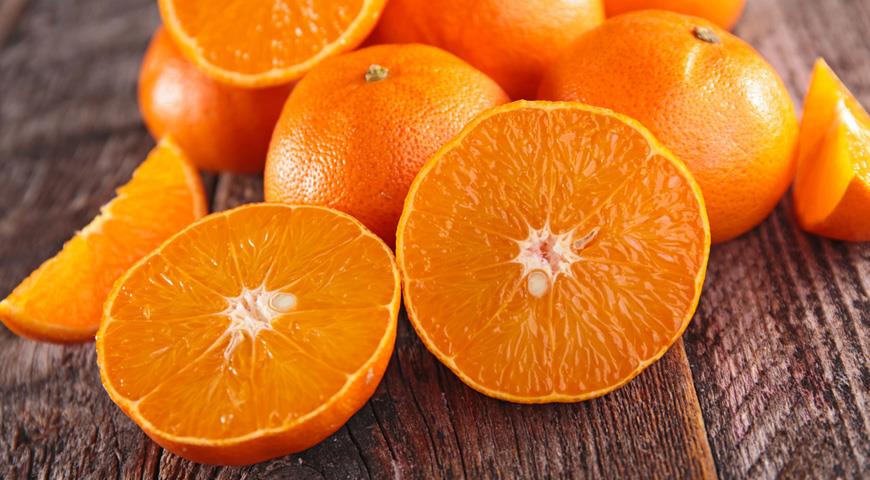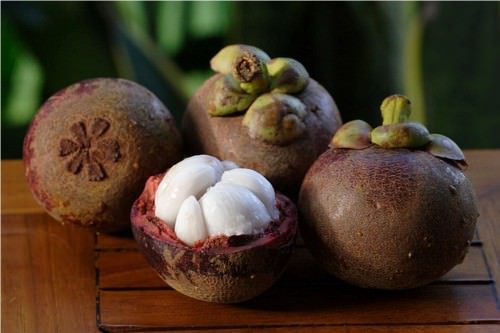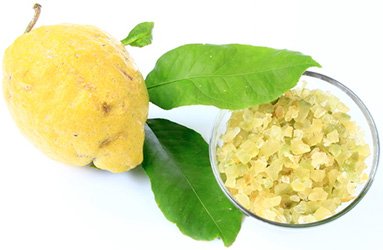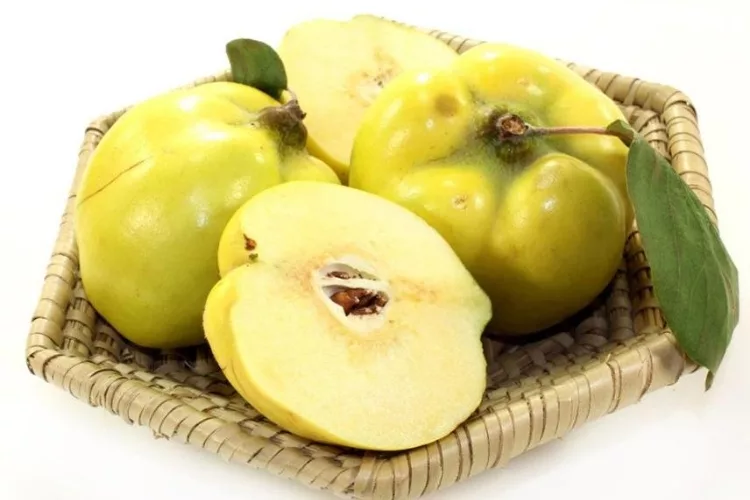14 Charming Facts About Salak
by Editorial Staff
The exotic Salak fruit is also called the snake fruit. This is because its skin is very similar to the shiny scales of a snake.
Facts About Salak

- Salak is the fruit of a tropical palm tree that grows up to 2 m in height. The fruit is similar in size to kiwi.
- The homeland of Salak is Southeast Asia. In Malaysia and Thailand, the crop is harvested from June to August, in Indonesia, the palm tree bears fruit all year round. It is believed that the most delicious fruits grow in Bali and Java, near Yogyakarta.
- Salak tastes like a banana with pineapple and nuts. It is light in the mouth, refreshes well, and has a pungent aftertaste.
- The fruits are pear-shaped or oval, tapered in a wedge-shaped manner at the base, and grow in clusters on a palm tree. Fruit dia - up to 4 cm, weight from 50 to 100 g. Fruits are covered with unusual brown skin with small thorns, similar to snake scales.
- The pulp of the fruit is beige, consists of one or several parts, tightly connected to each other. Inside each segment of the pulp, there are 1-3 large oval-shaped brown bones.
- Depending on the type of Salak, there are semi-sweet, dry and crunchy or juicy, soft and sour.
- Salak plucked unripe can withstand 2-3 days of transportation, for example, in bamboo baskets. In hot and humid climates, they stay no more than a week after harvest. The slightest damage accelerates the corruption.
- Snake fruit is a favorite treat of the primates who live in Monkey Park on Java. They often steal fruit from people.
- The peel of the fruit only looks firm and is quite easy to remove. You need to break off the tip with your fingers and peel the fruit from top to bottom. If it was in the refrigerator, then the rind breaks into small pieces, like the shell of a hard-boiled egg.
- Most of the Salak is consumed completely ripe and raw. In Indonesia, fruits are boiled in sugar and pickled. Fresh, unripe fruits are added to the rujak spicy fruit salad. Mature ones can be preserved.
- Although the seeds of most Salak are considered inedible, in Indonesia they are boiled in salt water to remove the mucus layer. After this treatment, the seeds are eaten without the skin.
- Salak is an important food product in producing countries. They contain many substances that are essential for maintaining health. One of them is beta-carotene, which is a powerful antioxidant and helps prevent heart disease, stroke, and even cancer. In "Snake Fruit" this substance is 5 times more than in watermelon and mango, and 3 times more than in guava.
- Beta-carotene and other antioxidants present in fruits are good for the eyes. To keep your eyesight sharp, it is recommended to drink Salak juice along with carrot juice. The polyphenolic compounds in Salak are similar to those found in green tea. They prevent the development of cancer.
- Salak is a low-calorie product, therefore nutritionists advise including it in the diet menu. Since the pulp is high in dietary fiber, it quickly satisfies the appetite.
 Also Like
Also Like

Clementines are a hybrid of an orange and a mandarin, and this variety was bred by the French priest and breeder Father Clement, after whom the exotic fruit got its name. Externally, clementines are similar to tangerines with one difference – there are pr...

“Charm” cake is a very delicate and delicious sponge cake. Ingredients For a light biscuit cake: eggs – 5 pcs. sugar – 1 incomplete glass vanilla sugar – 1 teaspoon flour – 0.75 cups starch – 2 tablespoons baking powder – 1 teaspoon (optional) For a dark ...

10 Interesting Facts About Arugulas
Indau, eruka, rocket, sowing caterpillar – this plant has many names, but whatever you call it less useful for health, it does not become from this. Arugula has a pleasantly bitter flavor that can add a spicy taste to any dish. Many who have tried it once...

10 Interesting Facts About Asparagus
All over the world, spring is considered the season of asparagus, when the first young juicy shoots appear from the ground. In our country, you don’t even have to look for local asparagus in the markets – you need to grow it (and it doesn’t grow in one ye...

10 Interesting Facts About Broccoli
There is more vitamin C in broccoli cabbage than in lemon, A – almost as much as in carrots, and the rest of the trace elements are certainly not less than in related vegetables of the cabbage family. It should be treated with caution by those who have in...

10 Interesting Facts About Cauliflowers
Cauliflower is superior to all other varieties in taste and nutritional content. What do you know about Cauliflowers? We will tell you 10 interesting facts about him, and if you have something to add, be sure to leave your comment under this post! Caulifl...

10 Interesting Facts About Dills
Many people actively use dill when preparing a wide variety of dishes; this seasoning is considered truly universal. What do you know about Dills? We will tell you 10 interesting facts about him, and if you have something to add, be sure to leave your com...

10 Interesting Facts About Fennels
Not the most frequent guest in our kitchens, but his every appearance should be noted. What do you know about Fennels? We will tell you 10 interesting facts about him, and if you have something to add, be sure to leave your comment under this post! The ho...

10 Interesting Facts About Garlic
Many doctors recommend eating garlic, in the absence of contraindications, of course. This is an extremely useful product, notable for the fact that when cooked or dried, it retains a significant proportion of useful substances. What do you know about Gar...

10 Interesting Facts About Greens
We know vegetables and greens are good for you. But what exactly is their strength and why are they so important in the daily diet? After examining the opinions of people leading a healthy lifestyle, we are a selection of 10 interesting facts. What do you...

10 Interesting Facts About Lettuce
Lettuce is known all over the world and has been actively used since the 20th century. People can grow lettuce on their own to consume its leaves or stump. It should be noted that lettuce varieties such as Roman are produced mainly in Europe (in the Medit...

10 Interesting Facts About Parsley
Even the usual seasoning can harbor a lot of unusual things. What do you know about Parsley? We will tell you 10 interesting facts about him, and if you have something to add, be sure to leave your comment under this post! Did you know that there are curl...

10 Interesting Facts About Pumpkins
Orange, juicy, bright, tasty, useful! Pumpkin is a real symbol of autumn. And what do you know about pumpkins? We will tell you 10 interesting facts about pumpkins, and if you have something to add, be sure to leave a comment under this post! In fact, the...

12 Interesting Facts About Daikon
Due to the high content of vitamins, daikon strengthens the immune system, and its phytoncides kill microbes. Daikon removes excess fluid from the body, cleanses the liver and kidneys, stimulates the stomach and intestines, and is even able to dissolve ga...

12 Interesting Facts About Mangosteen
We have already written about dragon fruit – one of the most popular fruits in Southeast Asia, especially in Thailand. We decided to continue the series of notes dedicated to fruits, which can be seen in abundance on Thai food stalls. The turn of mangoste...

12 Interesting Facts About Mustard
Mustard is an annual plant that grows up to 60 cm in height. The bright yellow flowers form seed pods, each containing about 6 seeds. What do you know about Mustard? We will tell you 12 interesting facts about him, and if you have something to add, be sur...

Citron is a rare fruit that belongs to the citrus family. At the moment, it grows only in some rather limited areas. Theophrastus, Virgil, Martial also spoke about this fruit, it is also mentioned in the Bible. The history of the origin of this citrus tre...

Guava is an evergreen plant of the Myrtle family, which includes about 100 species. This plant is native to the tropics of South America, but today it is grown in other parts of the world. The guava fruit is widely used for making desserts. Guava fruits a...

13 Interesting Facts About Beans
Many dishes contain beans, and in some countries, they are an integral part of the national cuisine, for example, in Mexico. What do you know about Beans? We will tell you 13 interesting facts about him, and if you have something to add, be sure to leave ...

14 Fascinating Facts About Chaenomeles
Japanese quince, or Japanese Chaenomeles, is a representative of the Plum subfamily, the Pink family, of the order Rosaceae. Japanese quince is small in height (grows from 1.5 to 4 m) with falling leaves (rarely semi-evergreen) bush or low tree, which is ...
Comments for "14 Charming Facts About Salak"
 |
 |
 |
 |
Best Food Ideas
Get FREE Recipe Gifts now. Or latest free cooktops from our best collections.
Disable Ad block to get all the secrets. Once done, hit any button below
 |
 |
 |
 |